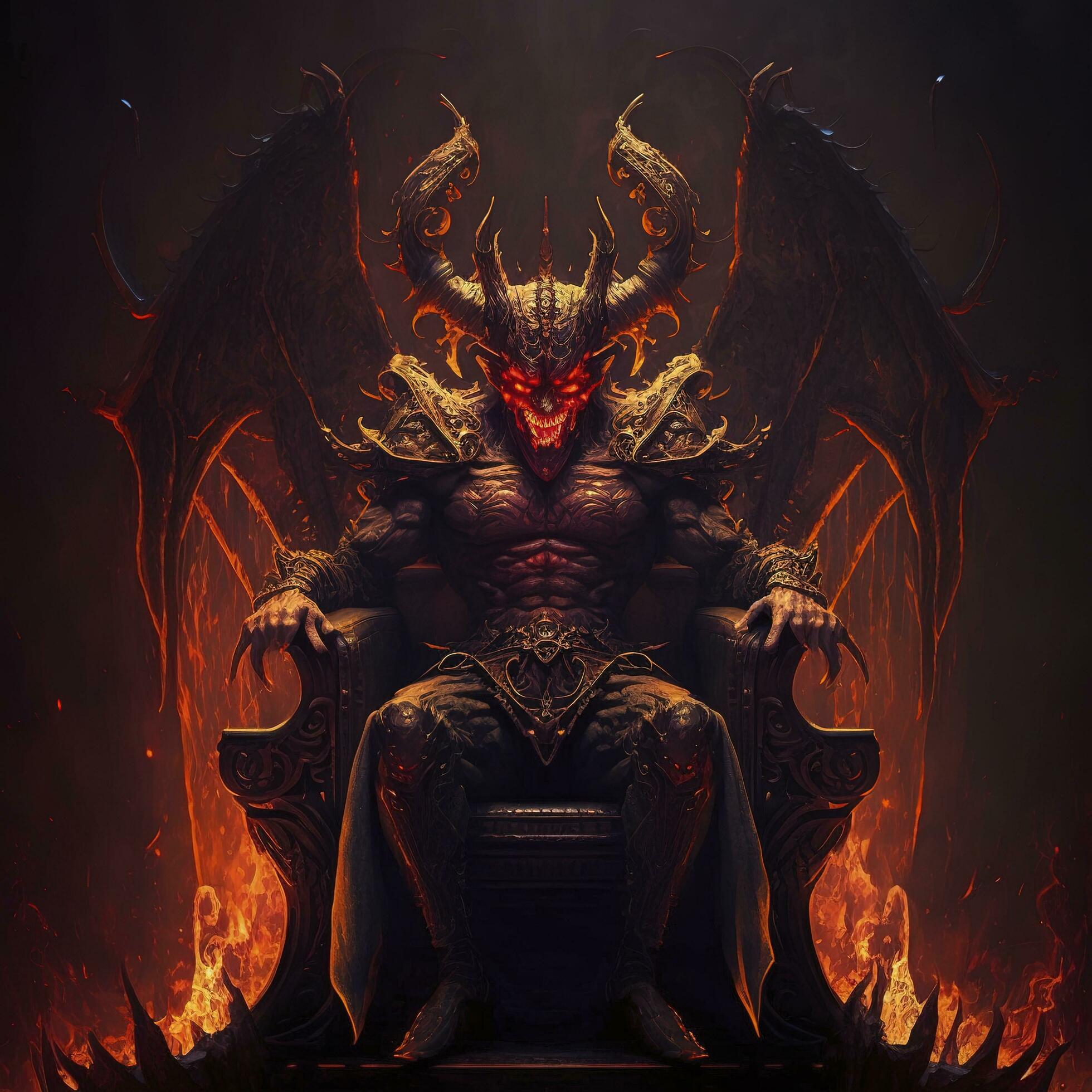Does evil truly have a face? For centuries, the concepts of the Devil and demons have fueled imaginations and instilled fear, shaping religious beliefs, influencing art, and coloring our understanding of morality.
The very mention of the "Devil" conjures images of a formidable adversary, a being of immense power and malevolence. This figure, also known by various names like Satan, Lucifer, and Beelzebub, is often portrayed as the antithesis of good, the embodiment of all that is wicked and destructive. He is the ultimate evil spirit, the god of evil in many belief systems, and the orchestrator of temptation and downfall.
Associated with the Devil are demons. These entities are often depicted as lesser spirits, the foot soldiers of the Devil, dedicated to carrying out his dark work. They are the harbingers of chaos and temptation, relentlessly seeking to corrupt humanity and lead individuals astray. The relationship between the Devil and demons forms a complex hierarchy, with the Devil at the apex, commanding an army of malevolent beings.
- Does Natural Sunscreen Work As Well As Regular Sunscreen
- Remoteiot Behind Firewall Examples A Comprehensive Guide For Secure Connections
However, the concepts of the Devil and demons aren't always kept separate. They are sometimes used interchangeably, highlighting the blurred lines in our understanding. This linguistic flexibility mirrors the multifaceted nature of evil itself. It can manifest in grand, sweeping acts of corruption, or it can insidiously creep into the mundane aspects of life.
Beyond religious contexts, the word "devil" frequently appears as an exclamation. It's a vocalization of surprise, frustration, or annoyance. "Where the devil is she?" is a phrase that's more likely to express exasperation than a genuine search for a demonic presence.
Similarly, "demon" can refer to a persistent, destructive habit. A person's struggle with alcoholism or a gambling addiction might lead them to describe their affliction as a "demon" they must conquer. It's a powerful metaphor, acknowledging the grip that these vices can have on a person's life.
- Remote Iot Platform Android The Ultimate Guide To Revolutionize Connectivity
- Securely Connect Remote Iot Vpc Raspberry Pi Free A Comprehensive Guide
The notion of a "devil" also extends to the idea of intense dedication. The intensity with which someone pursues a goal can be likened to a demonic fervor. A student who studies relentlessly, burning the midnight oil, can be described as being "like a demon" in their pursuit of knowledge.
The complexity of these terms is further enriched in the context of gaming and technology. "Devil skins," for instance, are a customizable cosmetic feature for graphic cards, providing an aesthetic touch for hardware enthusiasts. This illustrates the way the imagery associated with the Devil has expanded and found new forms of expression in contemporary culture.
This is also reflected in literature. Perhaps the devils most famous depiction was crafted by English poet John Milton in his 1667 masterpiece, Paradise Lost. The epic poem tells two stories: one of the fall of man and the other the rise of the Devil. The poem's depiction has influenced countless other works of fiction. In religious texts, the Devil's most notable appearance involves the story of Jesus: "Then Jesus was led up by the Spirit into the wilderness to be tempted by the devil." This illustrates the Devil's role as a tempter, constantly testing the limits of faith and morality.
The figures of the devil, lucifer, and satan have long been subjects of intrigue, fear, and theological debate. These names are often used interchangeably to refer to a single entity in popular culture and religious contexts, but their origins, meanings, and implications are more nuanced and complex. The Devil is a religious personification of evil. He works against god, employing an army of demons to harass humans and attempting to corrupt humans to do his bidding as well.
The figure of the Devil, and the concept of demons, continue to permeate the landscape of our culture. They reside in the darkest corners of our imaginations, influencing art, literature, and the ways we understand the human condition. Whether seen as a religious figure or a metaphor for our own internal struggles, the Devil and his cohorts offer a compelling lens through which to examine the complexities of good and evil.
| Devil and Demon: An Overview | |
|---|---|
| Definition: | The Devil is the ultimate evil spirit or the god of evil. Demons are spirits that do the work of the devil. |
| Interchangeability: | Sometimes the terms are used interchangeably. |
| Usage of "Devil": |
|
| Usage of "Demon": |
|
| Notable Appearances: |
|
| Related Concepts |
|
| Cultural Impact: | The Devil and demons are frequently featured in religious texts, literature, art, video games, and popular culture, shaping our understanding of good and evil. |
| Reference: | Wikipedia - Devil |
The figures of the Devil, Lucifer, and Satan have long been subjects of intrigue, fear, and theological debate. These names are often used interchangeably to refer to a single entity in popular culture and religious contexts, but their origins, meanings, and implications are more nuanced and complex.
The Devil is a religious personification of evil. He works against god, employing an army of demons to harass humans and attempting to corrupt humans to do his bidding as well. In addition to these roles, the Devil is seen as the ultimate tempter.
- Hdhub4you The Ultimate Guide To A Popular Movie Streaming Platform
- Mastering Remoteiot Vpc Network On Raspberry Pi With Free Aws Resources


